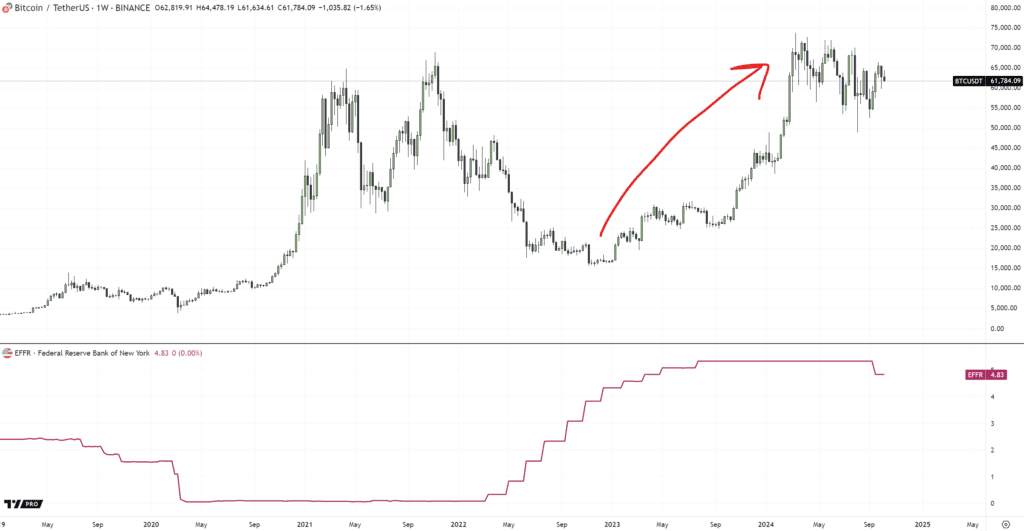This article is also available in Spanish.
The stagnant price of Bitcoin despite the first rate cut by the US Federal Reserve since 2020 has left many investors and traders perplexed in the market. In a new article on
Why is Bitcoin stagnating?
Kang questions the widespread market belief that interest rate cuts by the Federal Reserve will significantly increase Bitcoin and crypto prices. “Fed rates are just one factor that influences global liquidity, and global liquidity itself is just one factor that influences cryptocurrency prices,” he said. Kang finds it “absurd to see BTC rise 4.5x during a period where rates were going to hit multi-decade highs – showing little correlation between rates and BTC – and then expect a sharp inverse correlation presents itself as soon as rates start to increase. down.”
Related reading
He acknowledges that some argue that future rate changes are already priced into the market, but counters that this logic should apply equally to rate increases and decreases. “This is not to say that rates are not important, but rather that they are significantly overweighted by most market participants,” Kang added. He notes that stocks are more closely tied to interest rates due to factors such as discount rates used to value cash flows and mature corporate debt markets used to finance growth.

Addressing China’s recent economic recovery, Kang observes that its impact on Bitcoin and crypto is even less significant than many think. “It’s not surprising to see that the people who extrapolate Chinese stimulus measures as extremely bullish for crypto are mostly non-Chinese,” he commented. According to Kang, the Chinese have noticed a shift from crypto investments to A-shares in the stock market.
Backing his claims with data, Kang pointed out: “Since the Chinese stimulus announcement, USDT has been trading at a discount to CNY. Still at 3% recently. » This suggests a decrease in demand for the leading stablecoin Tether (USDT) in China, which aligns with a shift towards traditional stocks.
Despite his criticism, Kang makes it clear that he is not bearish on Bitcoin. “I just think some people forgot their skis a little bit,” he remarked. Kang predicts that Bitcoin trading will range between $50,000 and $72,000 until a significant new catalyst emerges.
Related reading
However, he remains optimistic about the opportunities in the market, saying: “The constant turnover of capital and new projects being developed mean there will always be coins to buy to generate bullish returns. » Nevertheless, Kang warns of potential volatility due to leveraged positions: “The market will still be subject to small corrections if leverage becomes too high (decently high at the moment). »
Speaking to the community, user Kang agreed, responding, “That’s exactly what I mean.” Interest rates are just one small piece of the puzzle. Even though they were negative for BTC, other factors such as the ETF may have pushed the price of BTC higher. Other factors could cause it to go up or down here. We are not guaranteed infinite prices simply because of rate cuts.
Echoing this sentiment, crypto analyst Astronomer (@astronomer_zero) commented: “I think interest rates (and yield inversion) have only a negligible impact on prices. Rather, it is an important holistic measure for bond market participants. But the zero effect on stocks or crypto is already proven.
Another analyst, Res (@resdegen), highlighted the correlation between Bitcoin and money supply: “BTC is more correlated to the quantity of money than to interest rates. It started to increase as the RRP decreased, resulting in positive net liquidity, regardless of interest rates, which were indeed near the peak.
At press time, BTC was trading at $60,903.

Featured image created with DALL.E, chart from TradingView.com




